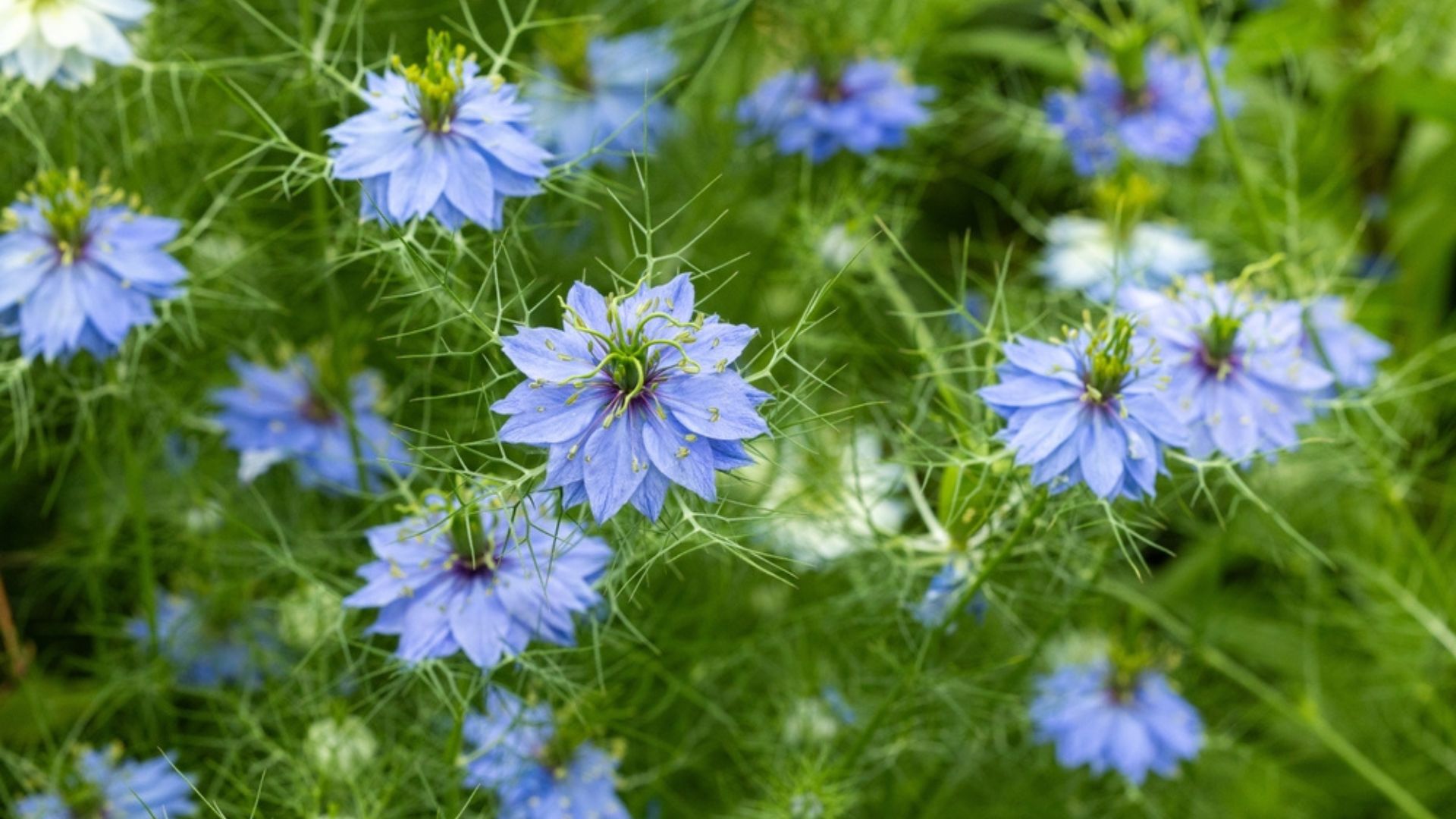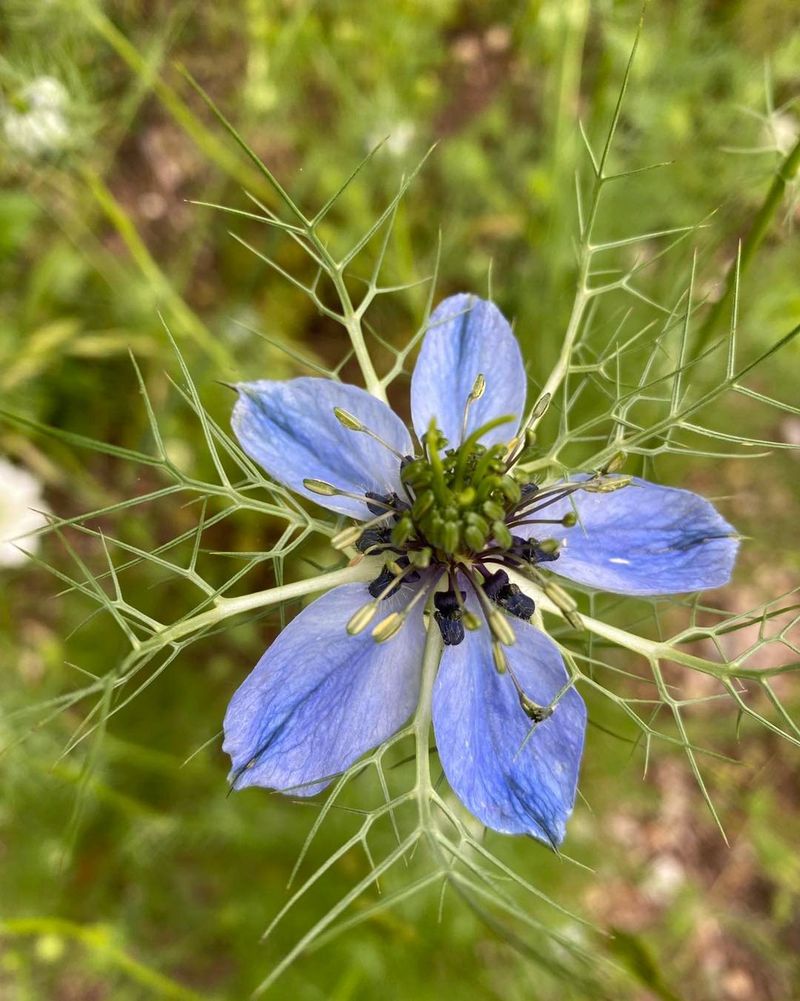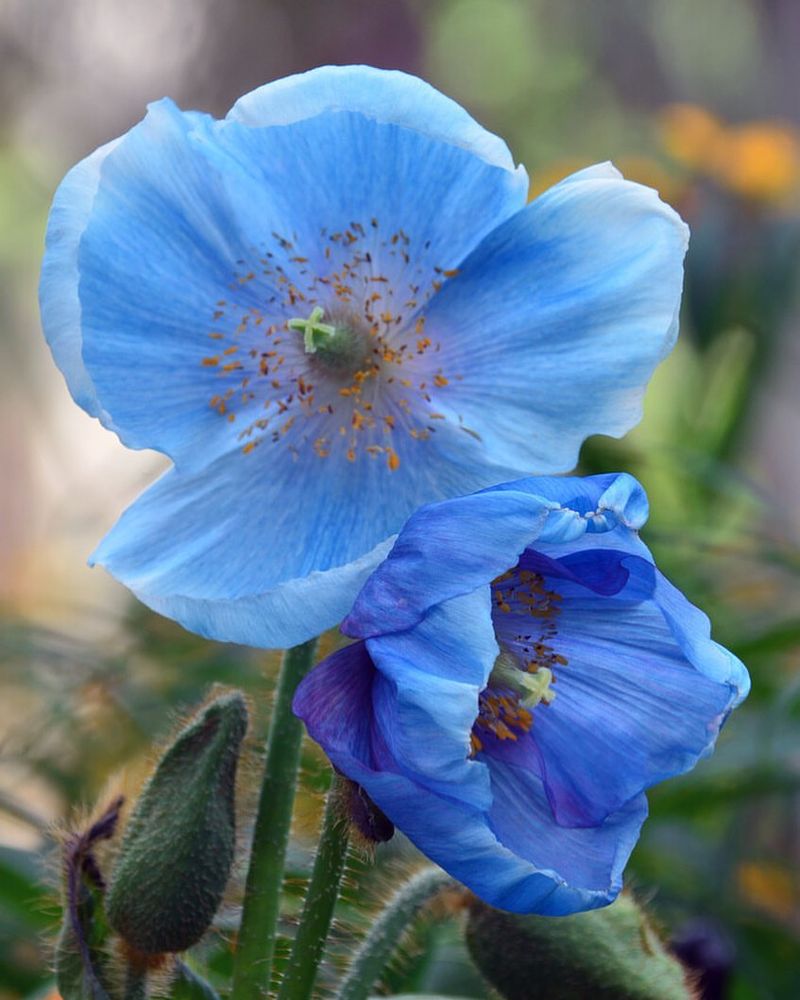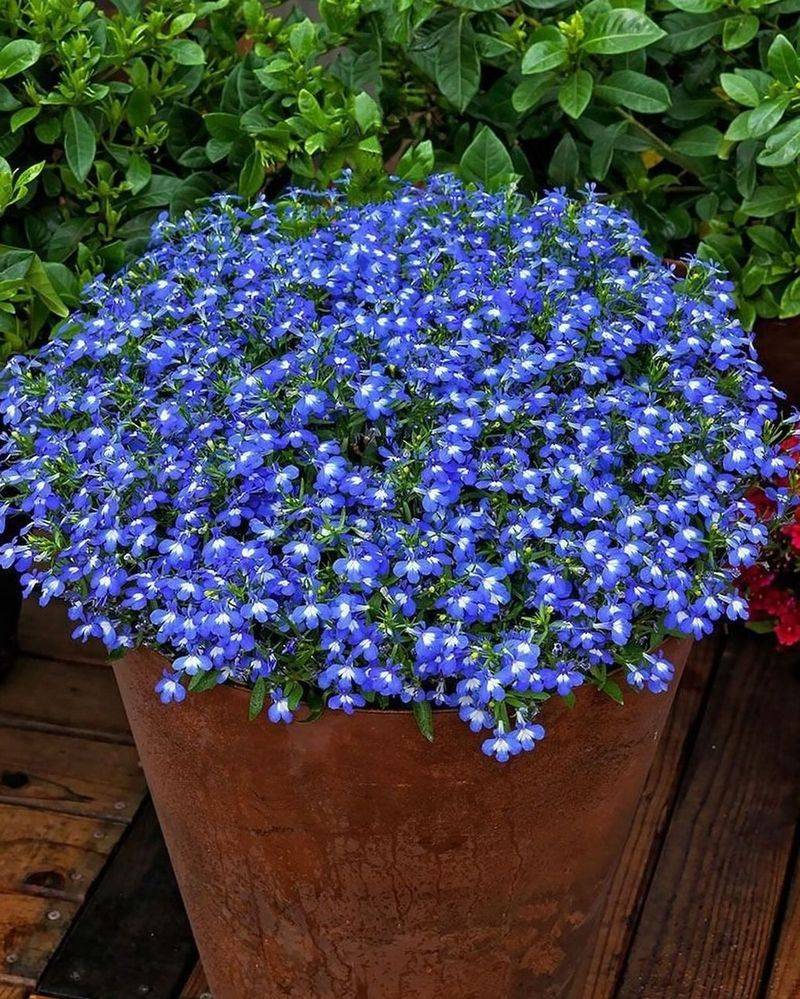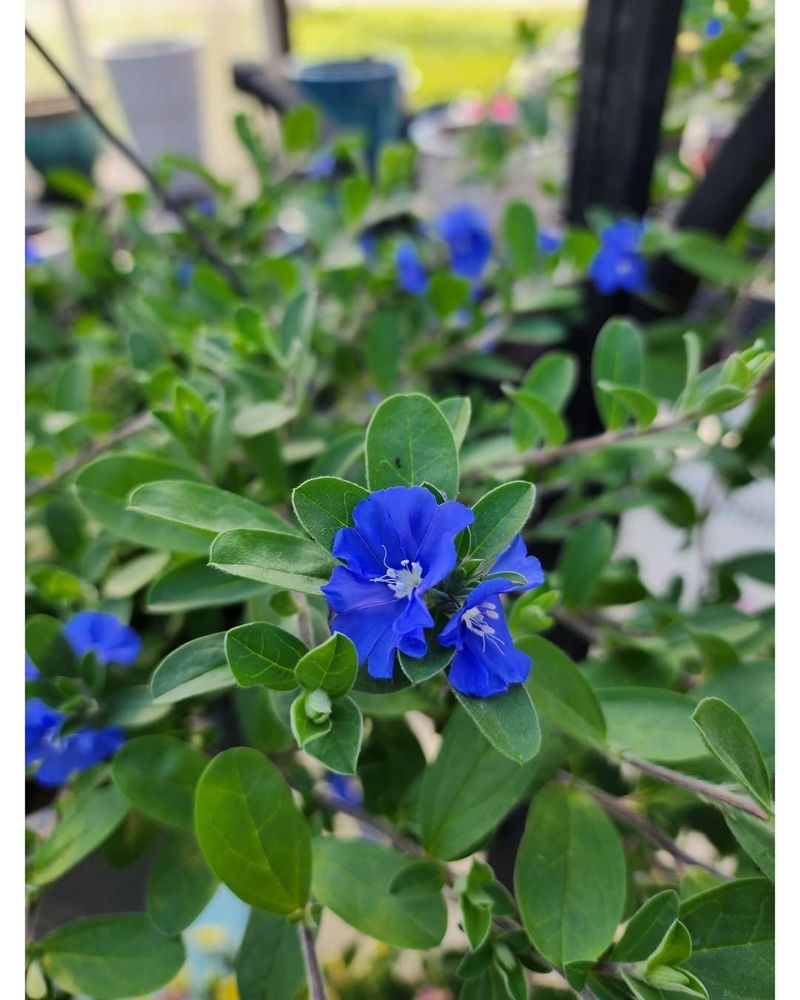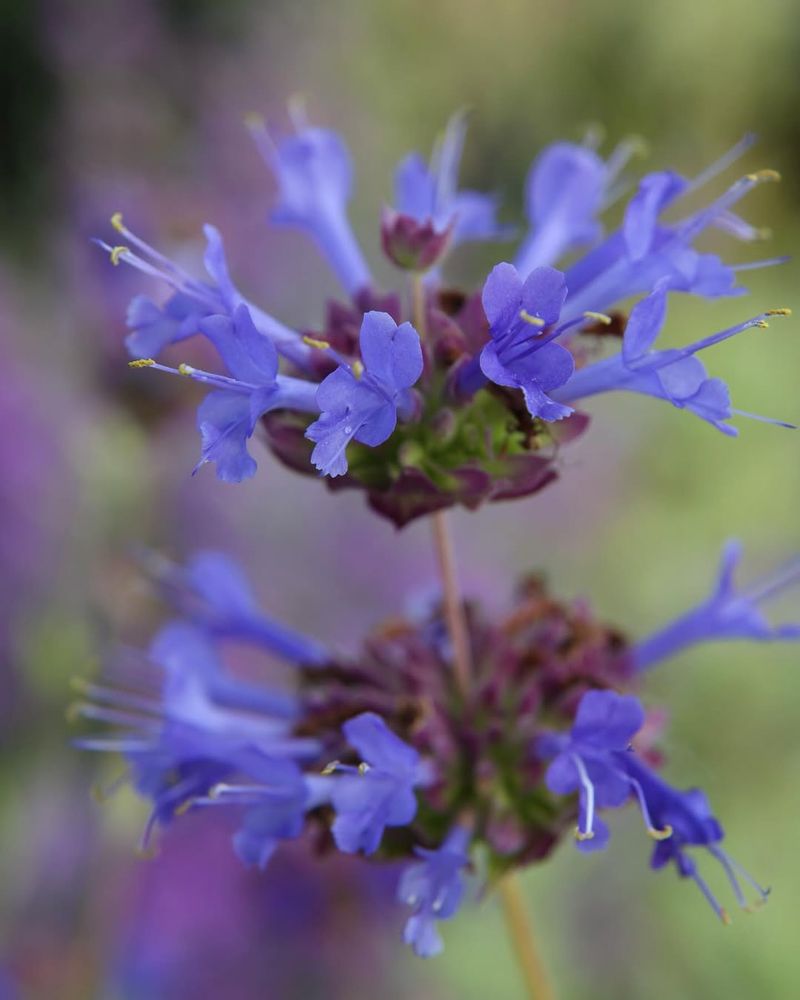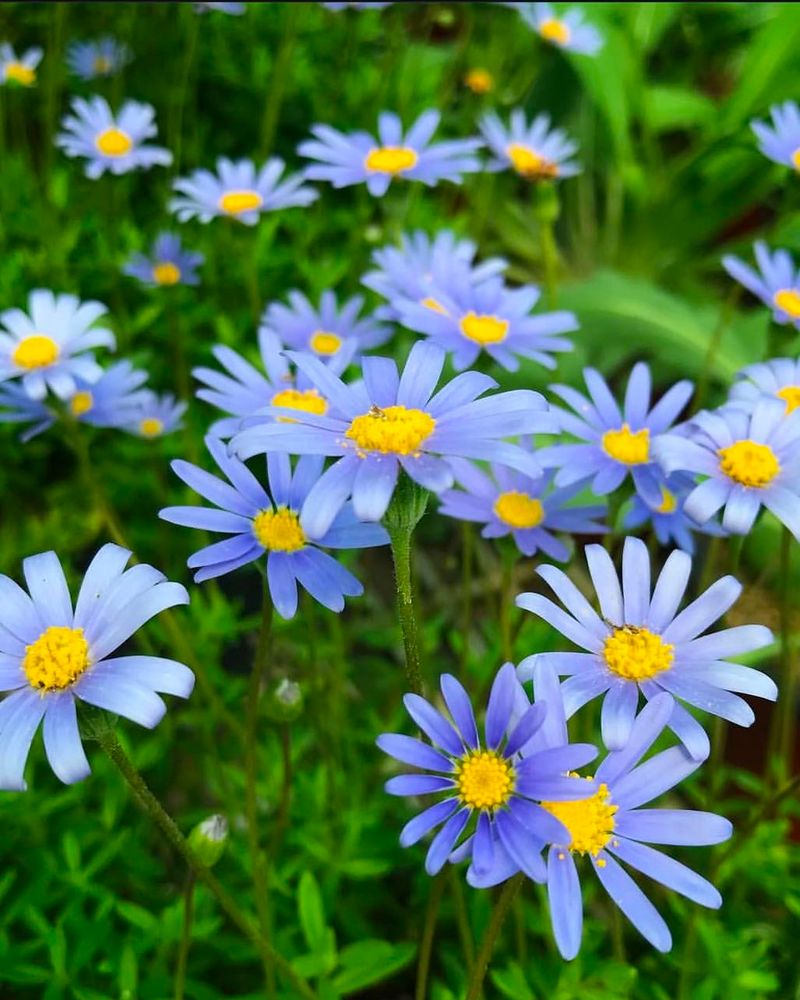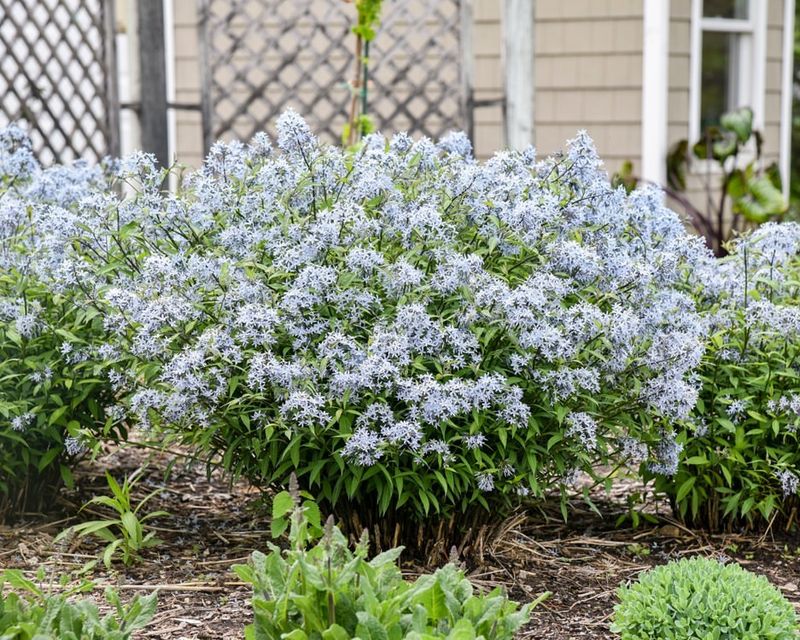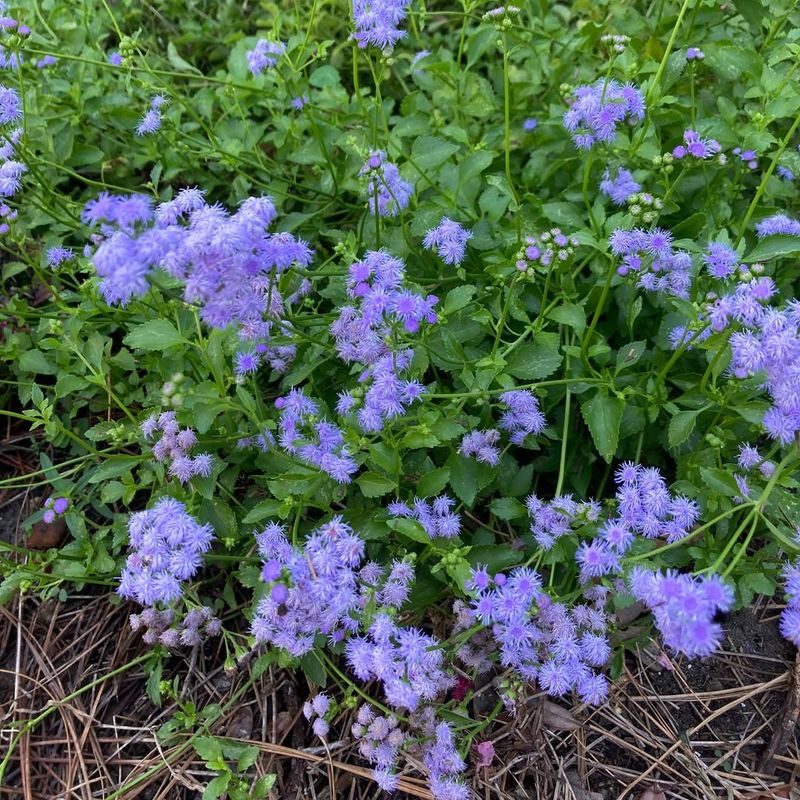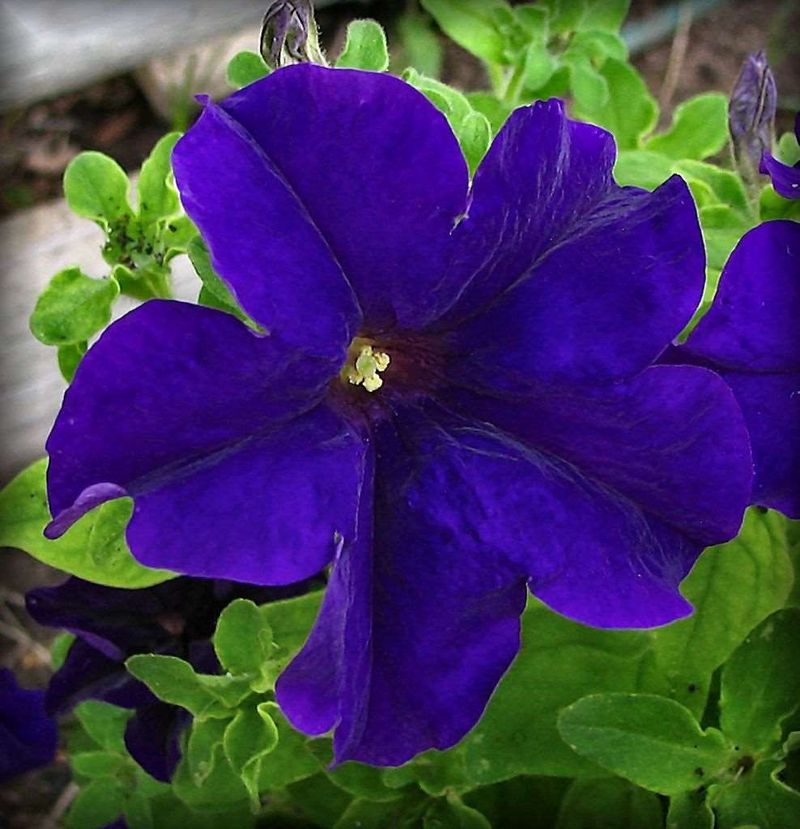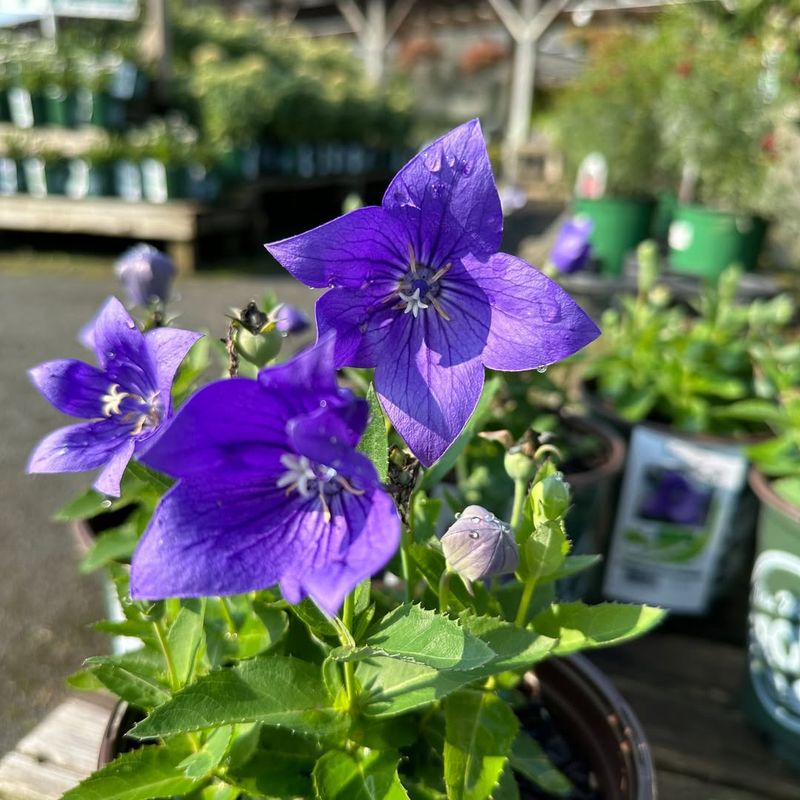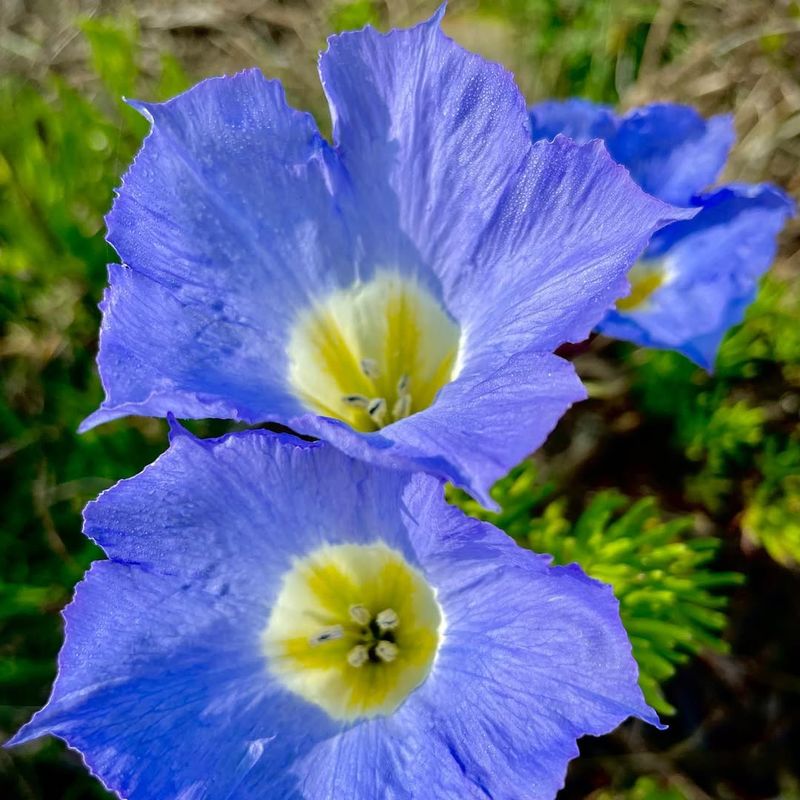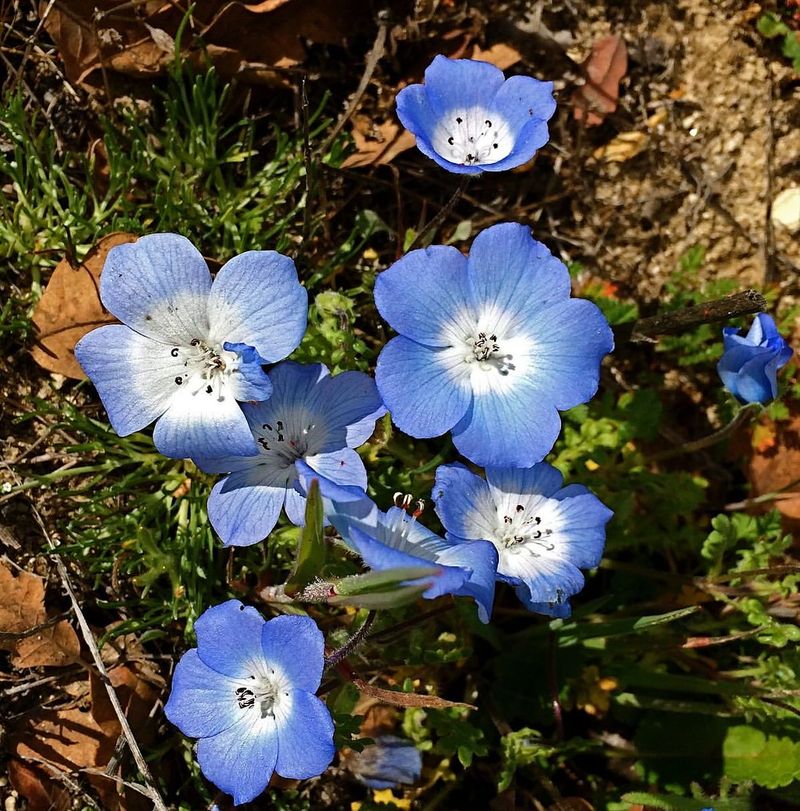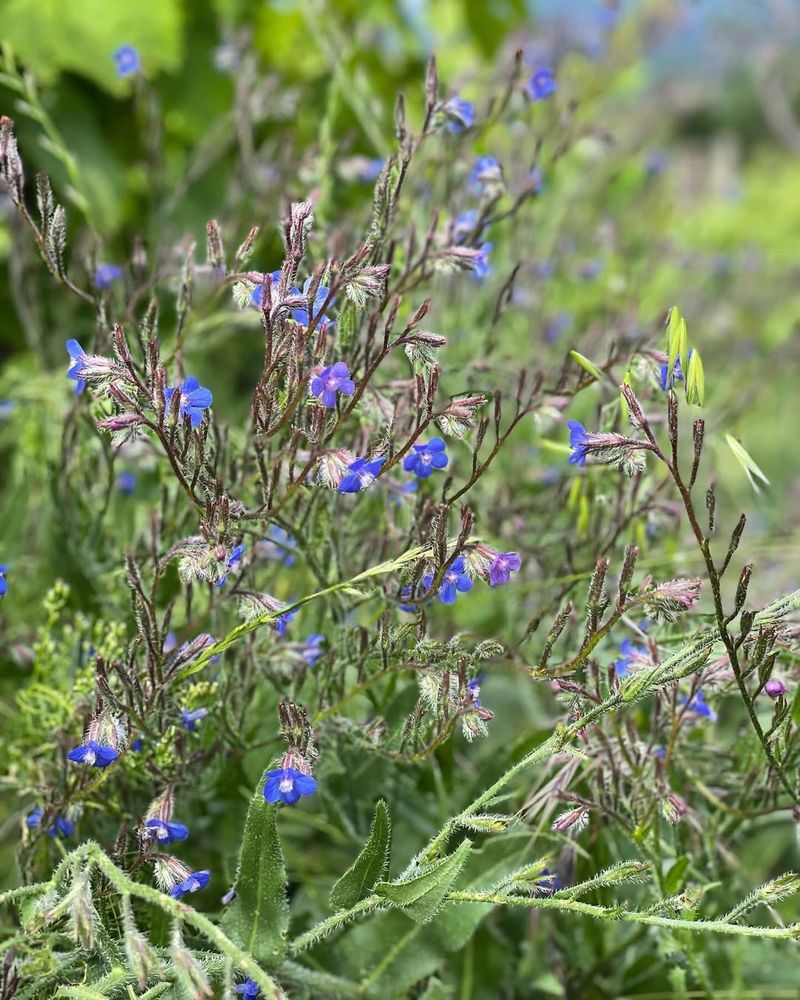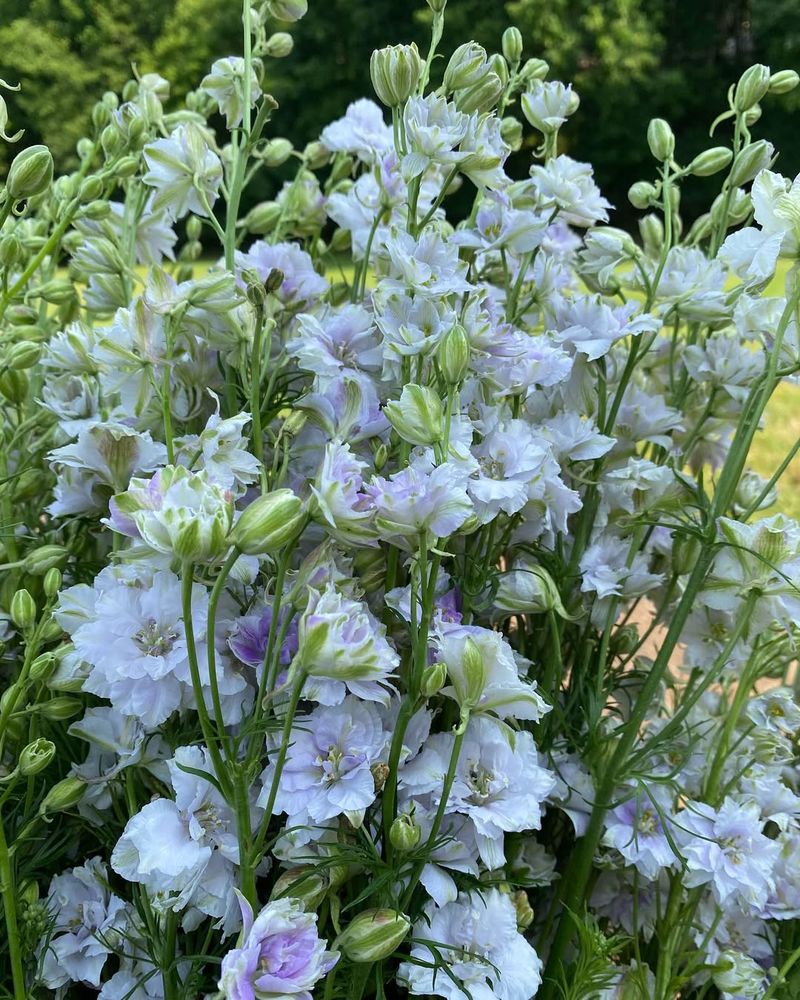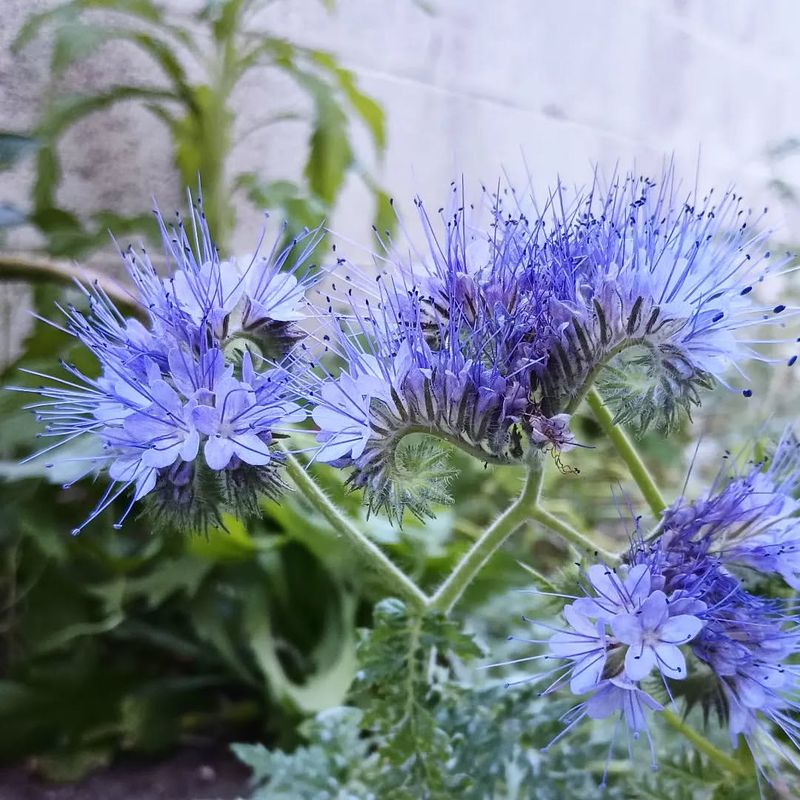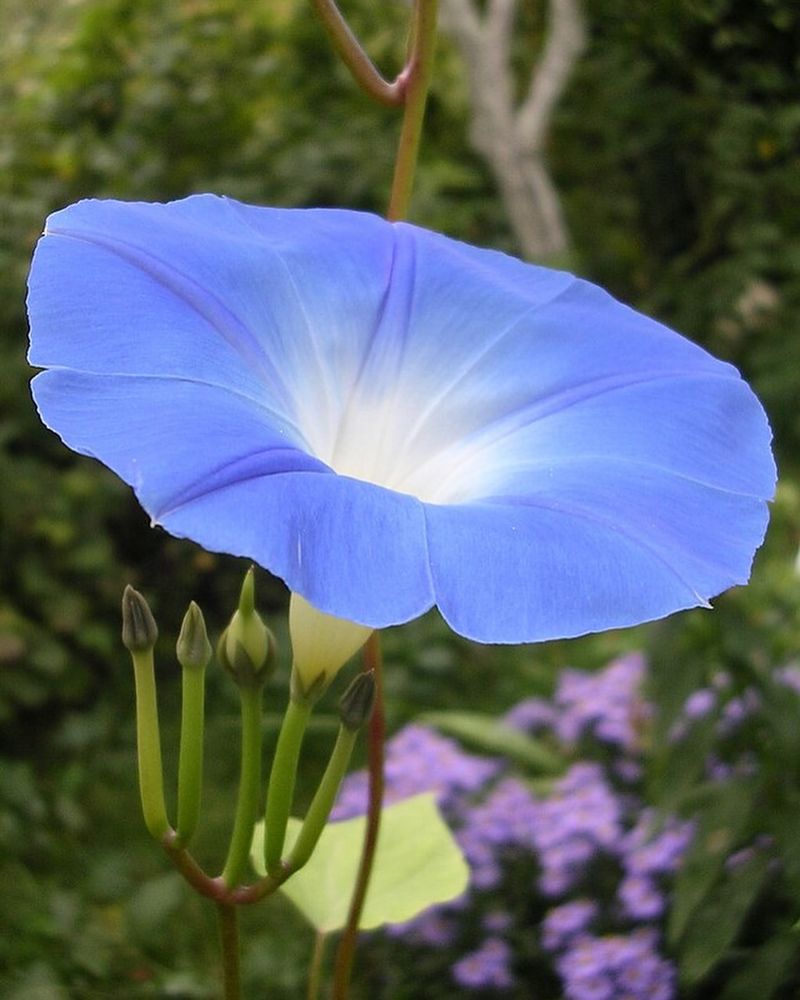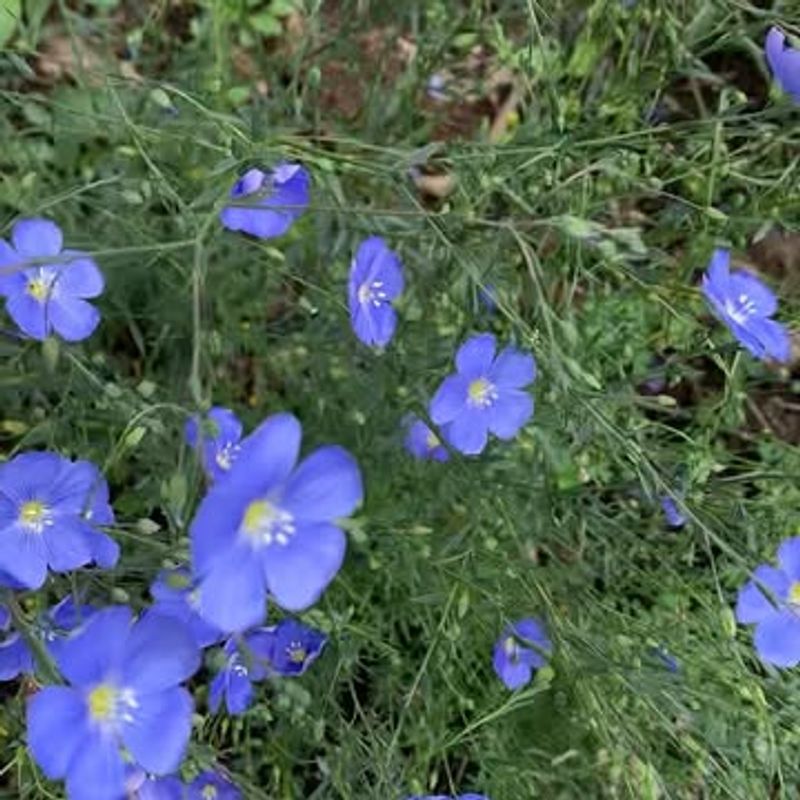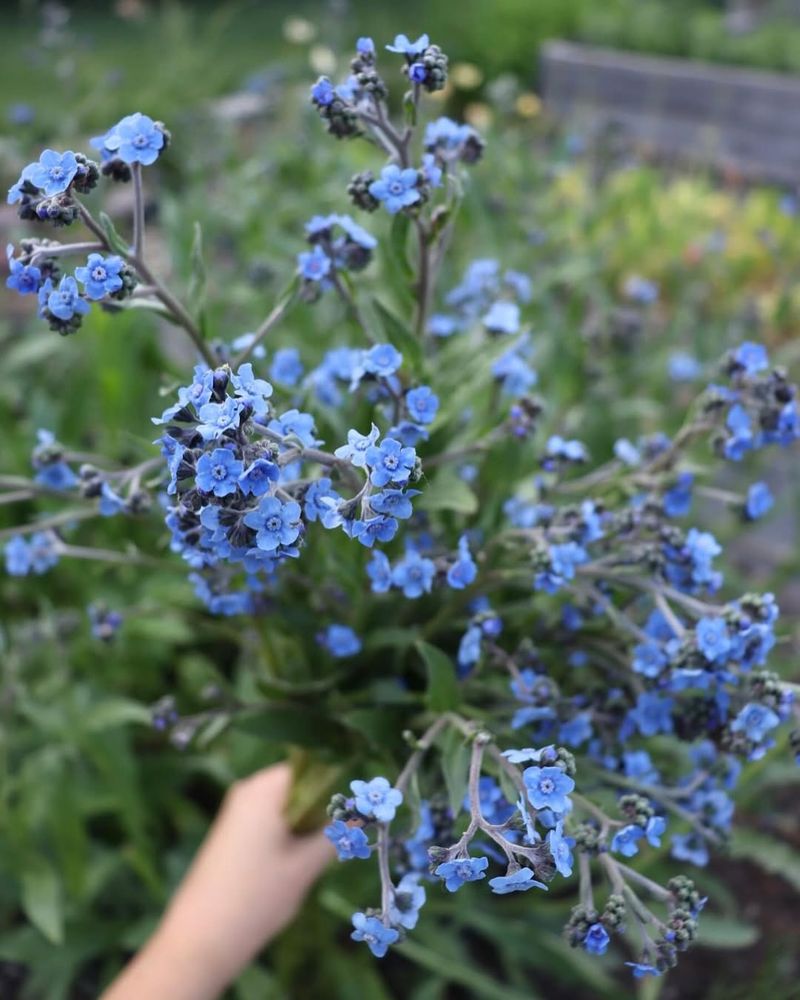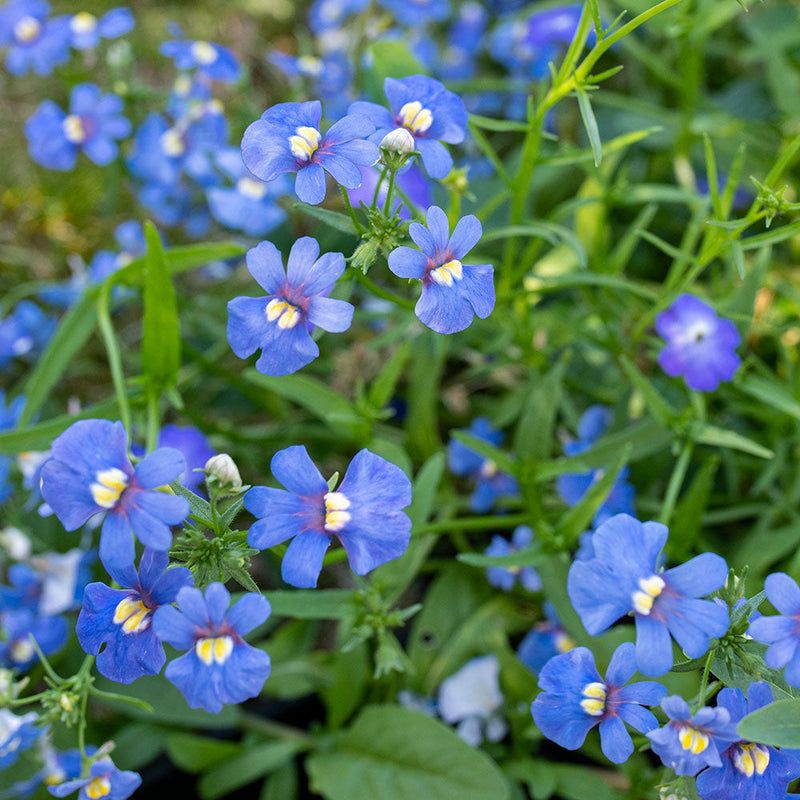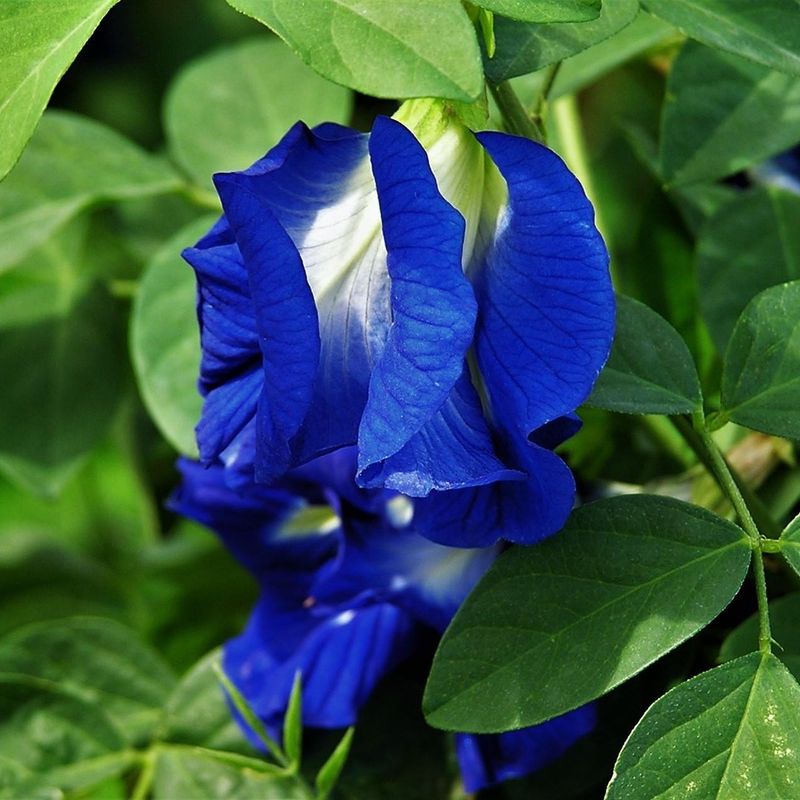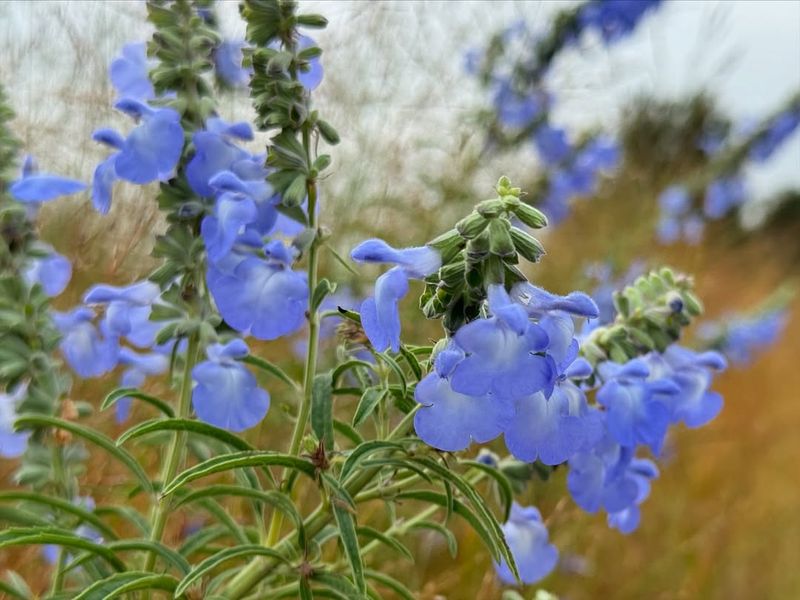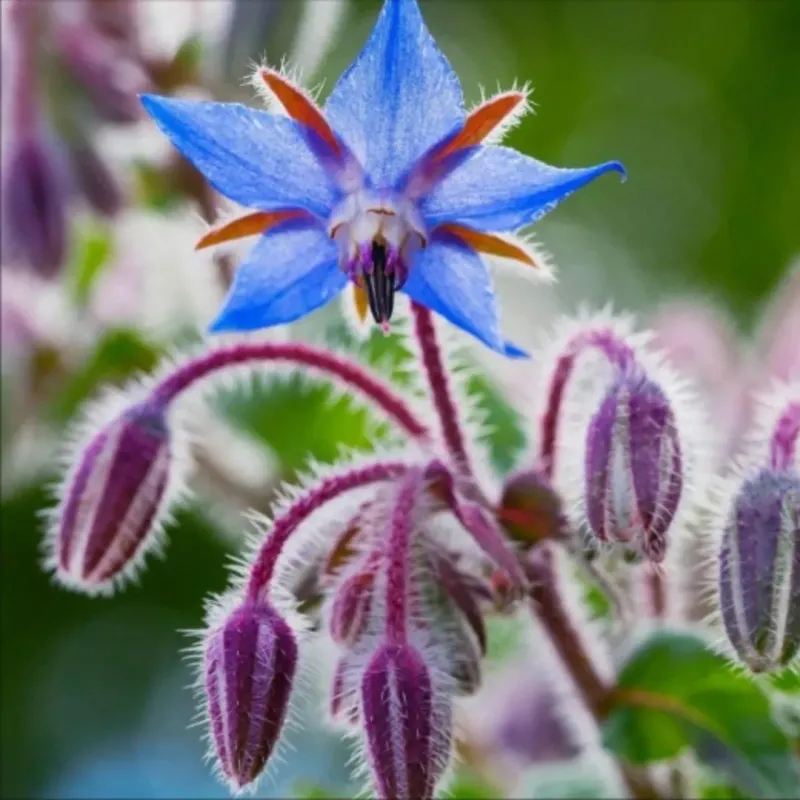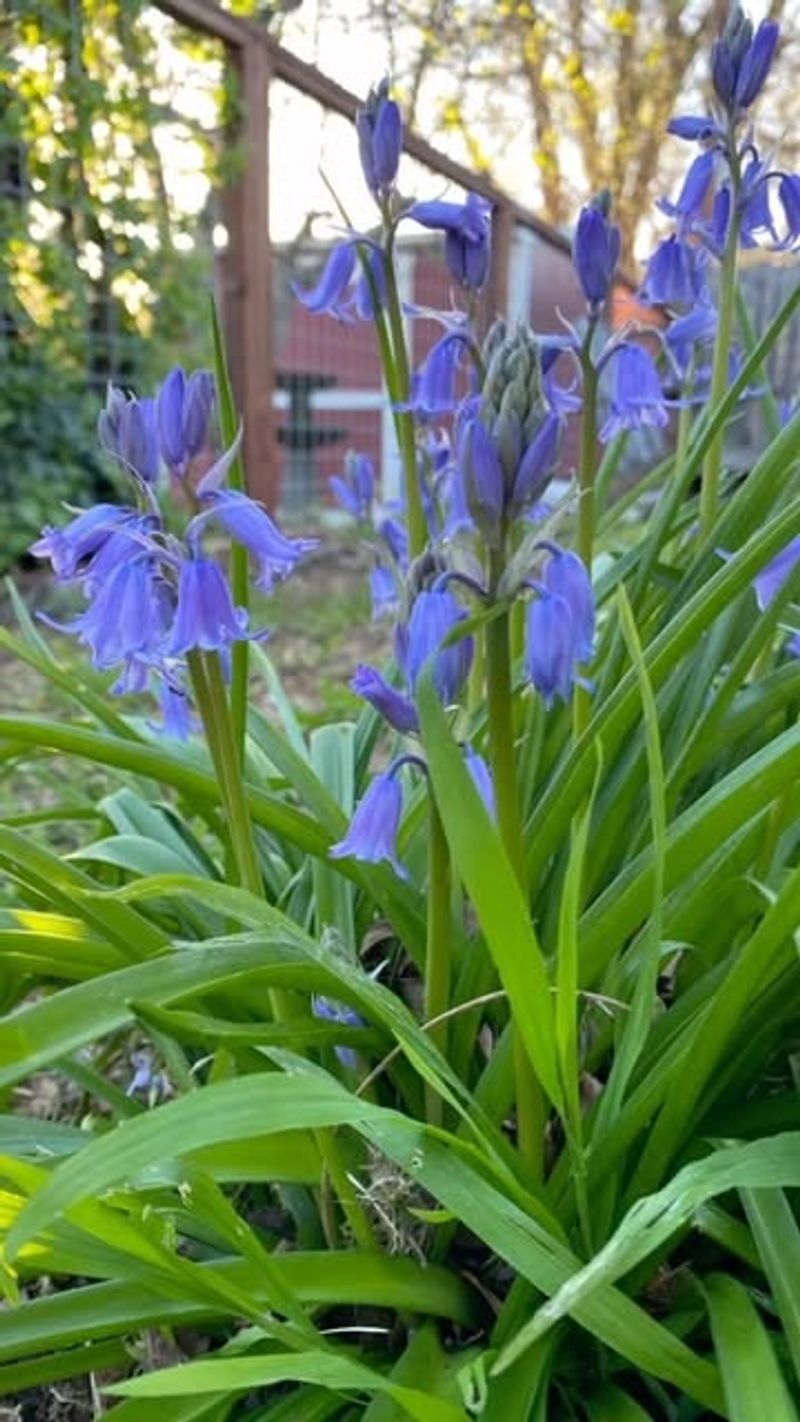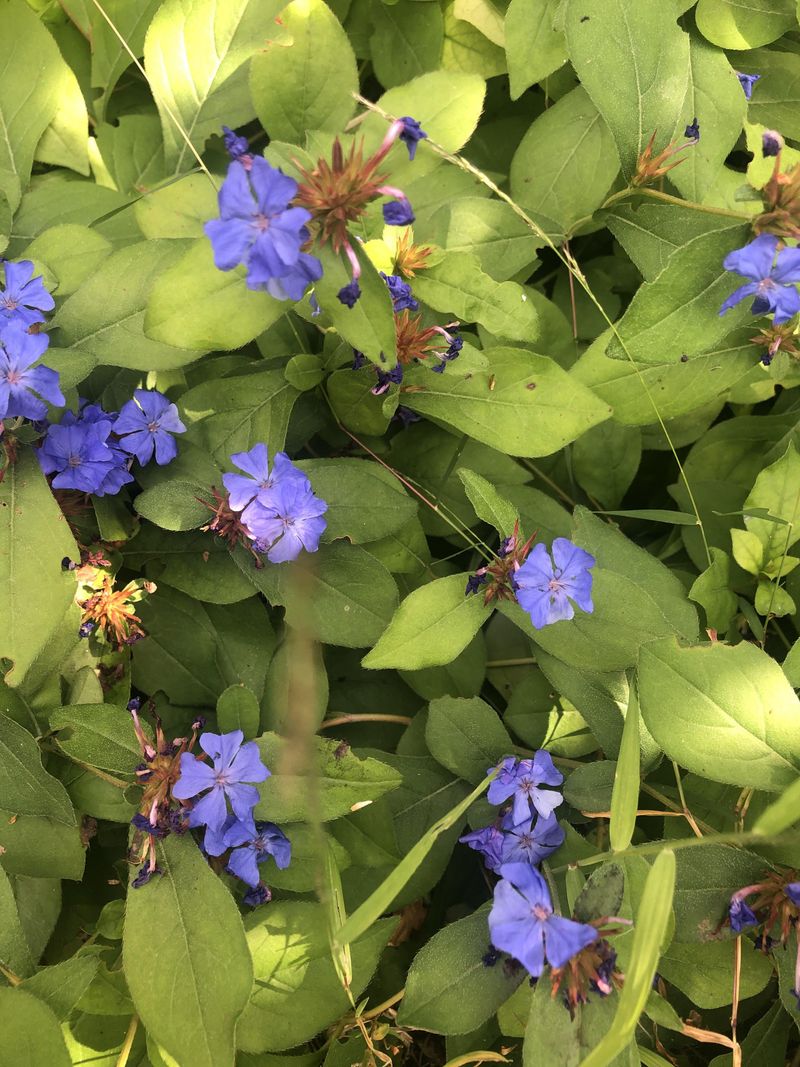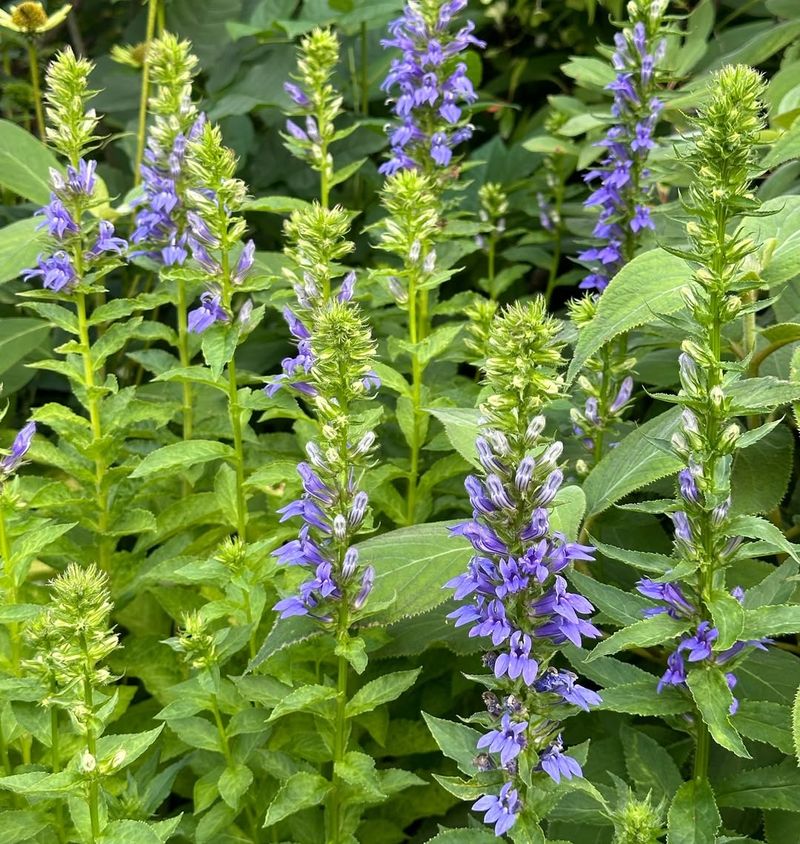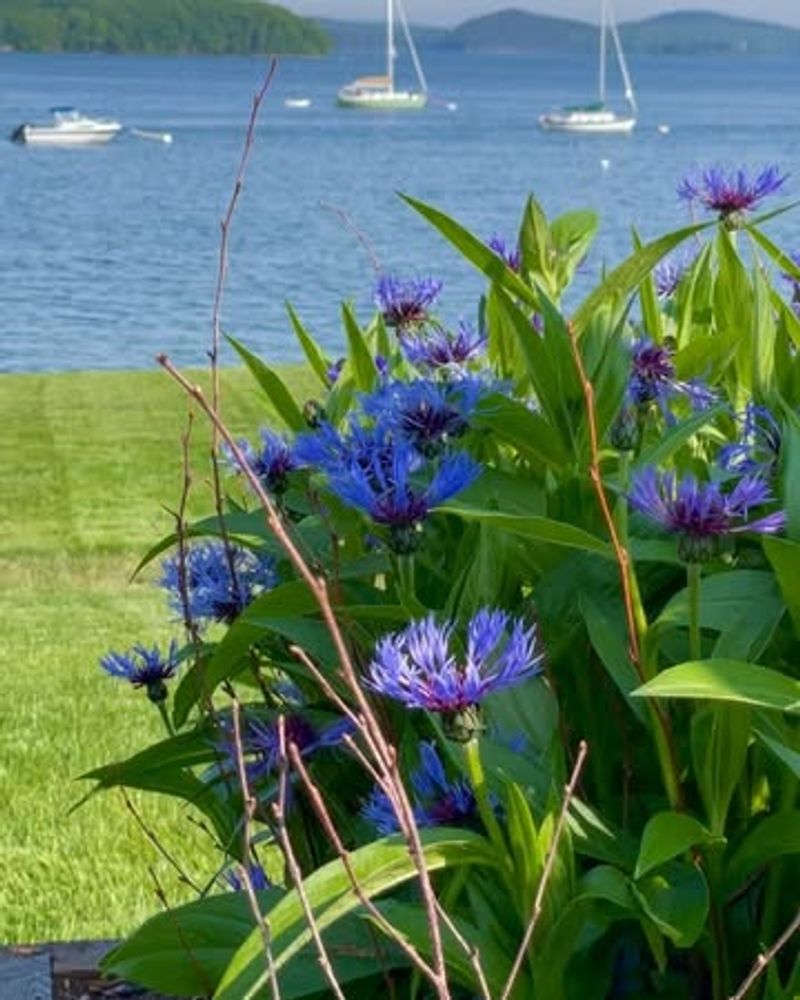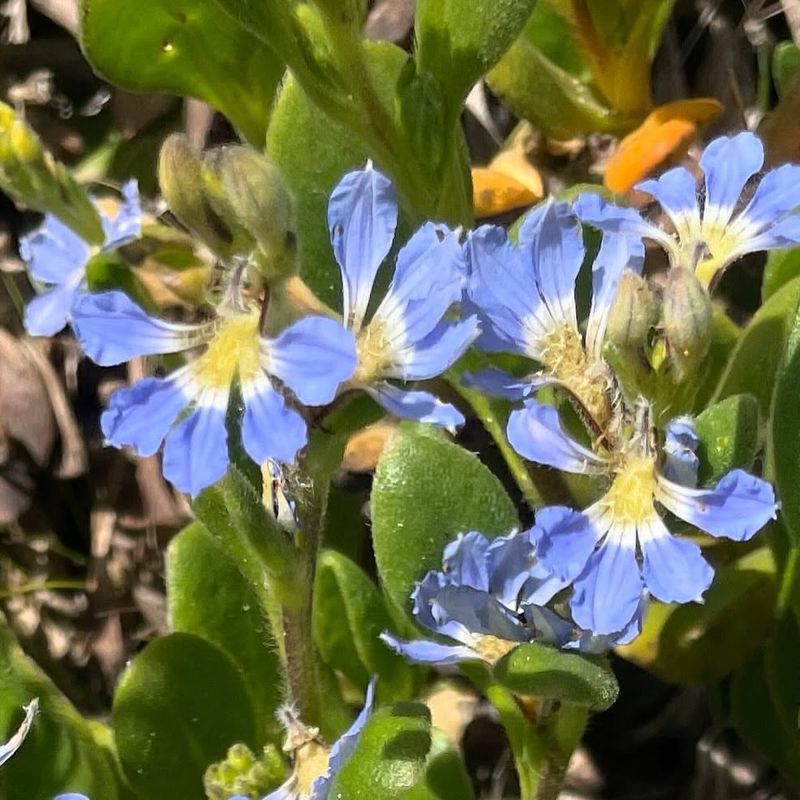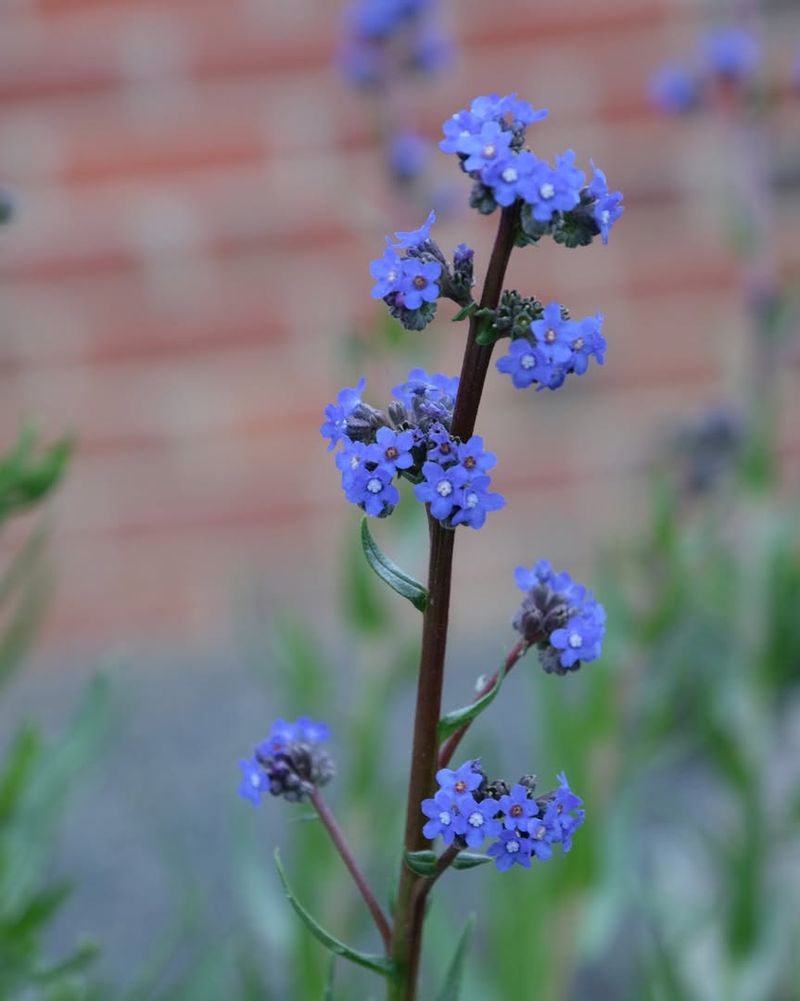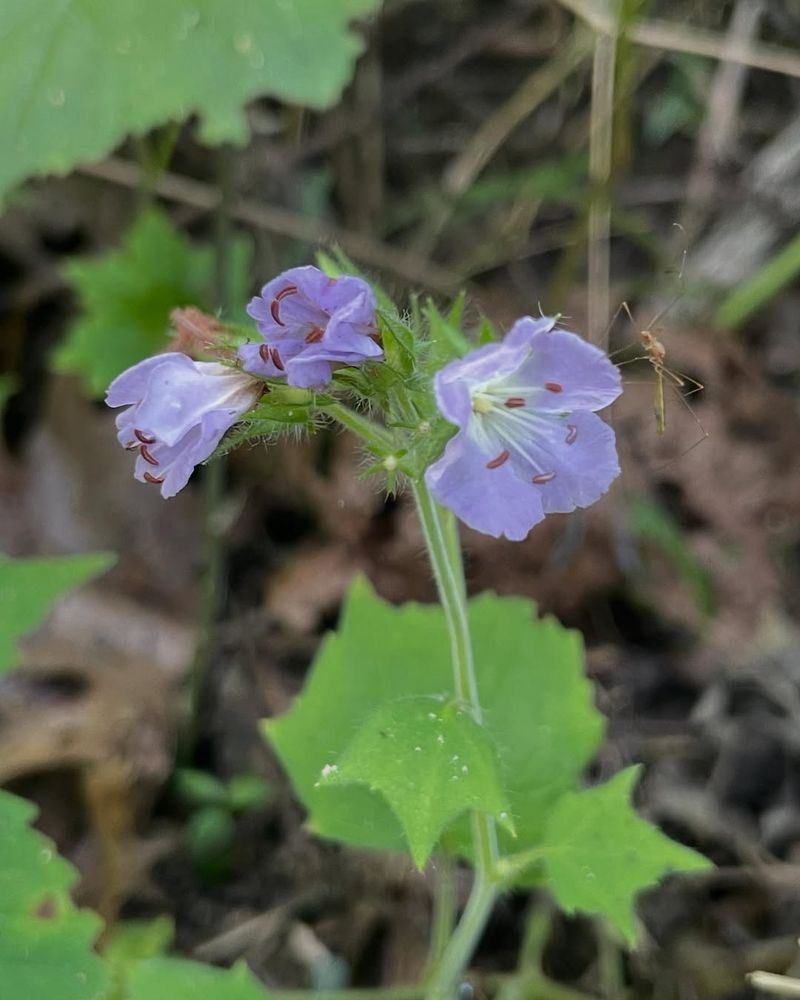Blue flowers are the unicorns of the garden world—rare, bold, and totally worth the search. While most annuals stick to reds, pinks, and yellows, blue blooms bring something unexpected to the mix.
From soft pastel shades to rich, electric hues, these plants turn heads and upgrade your garden game instantly. These 31 rare and beautiful blue annuals will add serious charm, color, and a touch of the extraordinary to your space. Ready to bring the blues to your garden? Let’s dig in.
1. Nigella (Love-in-a-Mist)
You might find these delicate beauties adding an ethereal touch to any garden. Known as Nigella or Love-in-a-Mist, these flowers boast intricate blue petals and a feathery foliage that creates a misty appearance. Their unique seed pods add an extra layer of interest after blooming.
Nigella is easy to grow from seeds and thrives in well-drained soil under full sun. Regular deadheading can prolong their blooming period. These annuals not only attract the eye but also beneficial pollinators like bees and butterflies.
2. Blue Poppy (Meconopsis)
Often considered the holy grail of blue flowers, this annual can be elusive yet rewarding. The Blue Poppy, or Meconopsis, displays stunning blue petals that captivate any onlooker. While it demands some patience and care, its ethereal beauty is well worth the effort.
Blue Poppies thrive in cool, moist climates with well-drained, rich soil. Providing partial shade and consistent moisture can help them flourish. Despite their finicky nature, they’re a breathtaking addition to any gardener’s palette.
3. Cornflower (Centaurea cyanus)
These flowers are the definition of true blue, offering a classic hue that’s hard to resist. Cornflower, or Centaurea cyanus, flaunts vibrant blue petals that dance in the breeze. Historically significant, they once grew wild in European grain fields.
Cornflowers are easy to grow, requiring minimal care, and thrive in full sun with average soil. Their nectar-rich blooms attract bees, making them a great choice for pollinator-friendly gardens. Plus, they make excellent cut flowers for arrangements.
4. Blue Lobelia (Lobelia erinus)
Imagine a cascade of blue tumbling from containers or hanging baskets. Blue Lobelia, or Lobelia erinus, is a favorite among gardeners seeking vibrant color in compact spaces. Its small, intense blue flowers bloom profusely.
This annual prefers moist, rich soil and partial shade, though it can tolerate full sun with enough water. Lobelia’s long blooming season provides color from spring through fall, ensuring your garden remains lively throughout the warmer months. Perfect for edging, containers, and window boxes.
5. Evolvulus (Blue Daze)
When you need a ground cover that stands out, look no further. Evolvulus, commonly known as Blue Daze, offers a hint of the sky with its lovely blue flowers. This low-growing plant is ideal for sunny borders and rock gardens.
Evolvulus thrives in full sun and well-drained soil, requiring little maintenance once established. Its drought-tolerant nature makes it perfect for gardeners in warmer climates. These charming plants deliver consistent blooms, creating a serene sea of blue in your landscape.
6. Salvia (Blue Salvia)
For a tall and striking presence, this plant stands out with its spiky blooms. Blue Salvia, or Salvia farinacea, showcases long-lasting blue flowers that rise above its green foliage. Known for its resilience and beauty, it’s a versatile choice.
Blue Salvia prefers full sun and well-drained soil, requiring minimal watering once established. Perfect for borders and pollinator gardens, it attracts hummingbirds and bees. Its upright growth habit adds architectural interest to the garden.
7. Felicia Daisy (Blue Marguerite)
These cheerful blooms bring a smile with their dainty appearance. Felicia Daisy, or Blue Marguerite, features sky-blue petals that contrast beautifully with its sunny centers. This annual is perfect for adding a touch of whimsy to garden beds.
Felicia Daisies thrive in full sun and well-drained soil, making them easy to grow. Regular deadheading encourages continuous blooming. They work well in borders and containers, offering a pop of color throughout the season.
8. Browallia (Amethyst Flower)
These lovely blooms provide a burst of color in shaded gardens. Browallia, also known as Amethyst Flower, has deep blue, star-shaped flowers that shine in less sunny spots. It’s a fantastic choice for those tricky areas.
Browallia grows well in partial to full shade and moist, well-drained soil. It’s an excellent option for hanging baskets and shaded borders. These annuals bloom continuously, providing a splash of blue even in the dimmest parts of your yard.
9. Ageratum (Floss Flower)
You might find these fluff-covered flowers endearing. Ageratum, or Floss Flower, displays clusters of small, fuzzy blue blooms that add texture to any garden. They’re a favorite for adding soft color and interest to beds and borders.
Ageratum thrives in full sun to partial shade and appreciates rich, well-drained soil. Regular deadheading helps maintain its long blooming season. These annuals are perfect for cottage gardens and attract butterflies with their nectar-rich flowers.
10. Petunia (Blue Petunia)
Providing a splash of blue in an array of vibrant colors, this flower is a staple in many gardens. The Blue Petunia offers trumpet-shaped blooms that are as easy to grow as they are beautiful. Petunias thrive in full sun and well-drained soil.
They require regular watering and benefit from occasional fertilizing to maintain their bloom production. Perfect for containers, hanging baskets, and garden beds, Petunias provide continuous color throughout the growing season.
11. Balloon Flower (Platycodon)
These intriguing blooms are a conversation starter. Balloon Flower, or Platycodon, gets its name from its balloon-like buds that burst open into star-shaped blue flowers. It’s a delightful addition to any flower garden. Balloon Flowers prefer full sun to partial shade and well-drained soil.
Once established, they require little maintenance. Their long blooming period and unique shape make them a favorite among gardeners looking to add something different to their collection.
12. Nolana (Chilean Bellflower)
These alluring little flowers provide a taste of the exotic. Nolana, or Chilean Bellflower, features trumpet-shaped blue blooms that thrive in sandy soils and coastal gardens. They’re perfect for adding a touch of the unusual to your landscape.
Nolana grows well in full sun and well-drained soil, displaying a trailing habit that’s ideal for hanging baskets and container gardens. Their drought tolerance makes them a great choice for xeriscapes. These annuals attract pollinators, adding life to your garden.
13. Nemophila (Baby Blue Eyes)
In the spring, these delicate blooms dot the landscape with their charming color. Nemophila, commonly known as Baby Blue Eyes, produces cup-shaped flowers with blue petals and white centers. These annuals are a favorite for naturalistic gardens.
Nemophila thrives in cool, moist conditions and well-drained soil. They’re ideal for woodland gardens and shaded borders. Their ability to self-seed makes them a low-maintenance option for gardeners seeking continuous blooms year after year.
14. Anchusa (Italian Bugloss)
These striking blooms add a touch of drama to any garden. Anchusa, or Italian Bugloss, features clusters of cobalt blue flowers that stand out against its green foliage. This annual is a showstopper in mixed borders and wildflower gardens.
Anchusa prefers full sun and well-drained soil, requiring minimal care once established. Its nectar-rich flowers attract bees and butterflies, making it a great choice for pollinator-friendly gardens. This plant’s bold color adds depth and interest to any garden display.
15. Larkspur (Delphinium consolida)
These flowers offer an elegant touch with their towering spikes of blue blooms. Larkspur, or Delphinium consolida, provides vertical interest with its richly colored flowers that attract hummingbirds.
Larkspur thrives in full sun and well-drained soil, making it a popular choice for cottage gardens and cut flower arrangements. Regular deadheading encourages further blooming. Despite their delicate appearance, these annuals are surprisingly hardy, bringing height and color to any garden.
16. Phacelia (Blue Tansy)
These unique flowers are a favorite among bees and other pollinators. Phacelia, also known as Blue Tansy, displays clusters of blue flowers that add texture and color to any garden. Phacelia grows best in full sun and well-drained soil, requiring little maintenance.
Their ability to fix nitrogen makes them an excellent choice for improving soil fertility in vegetable gardens. These annuals provide continuous blooms and support a healthy ecosystem in your backyard.
17. Morning Glory (Ipomoea tricolor)
These fast-growing vines are a morning delight with their stunning blooms. Morning Glory, or Ipomoea tricolor, showcases trumpet-shaped blue flowers that open in the morning sunshine.
Morning Glories thrive in full sun and well-drained soil, making them perfect for trellises, fences, and arbors. With minimal care, they provide a vertical element in your garden. These annuals are ideal for gardeners seeking quick and impressive results with their climbing habit.
18. Blue flax (Linum perenne)
These dainty flowers bring a touch of elegance to any garden. Blue Flax, or Linum perenne, features sky-blue petals that appear to float above fine green foliage. They’re a charming choice for adding movement to your flower beds. Blue Flax thrives in full sun and well-drained soil, requiring minimal care.
Their delicate flowers open each morning, providing a daily display of color. These annuals are perfect for naturalistic gardens and wildflower meadows, attracting pollinators with their subtle beauty.
19. Chinese Forget-Me-Not (Cynoglossum amabile)
These cheerful blooms offer a touch of nostalgia in any garden. Chinese Forget-Me-Not, or Cynoglossum amabile, produces clusters of small blue flowers that are easy to grow and maintain. Chinese Forget-Me-Nots thrive in full sun to partial shade and well-drained soil.
Their ability to self-seed makes them a low-maintenance choice for gardeners seeking continuous blooms. These annuals are perfect for borders and cottage gardens, providing a classic touch with their charming flowers.
20. Blue Nemesia (Nemesia strumosa)
These delightful flowers are perfect for adding a touch of charm to your garden. Blue Nemesia, or Nemesia strumosa, offers vibrant blue blooms that thrive in pots and hanging baskets.
Blue Nemesia grows best in full sun to partial shade and requires regular watering to maintain their blooms. Their compact growth habit makes them ideal for small gardens and container arrangements. These annuals provide a continuous burst of color, making them a favorite among patio gardeners.
21. Blue Butterfly Pea (Clitoria ternatea)
These exotic flowers are sure to catch the eye. Blue Butterfly Pea, or Clitoria ternatea, features striking blue petals that resemble butterfly wings. They’re a unique addition to any garden looking for a touch of the extraordinary.
Blue Butterfly Pea thrives in full sun and well-drained soil, requiring minimal care once established. Their ability to climb makes them perfect for trellises and fences. These annuals are known for their unique blooms and their use in natural dyes and teas.
22. Blue Sage (Salvia azurea)
These tall flowers make a statement with their spiky blooms. Blue Sage, or Salvia azurea, showcases tall spires of blue flowers that add height and color to your garden. Blue Sage thrives in full sun and well-drained soil, requiring little maintenance once established.
They’re perfect for pollinator gardens, attracting bees and hummingbirds with their nectar-rich flowers. These annuals provide a dramatic display, offering structure and interest in mixed borders.
23. Borage (Borago officinalis)
These star-shaped flowers are a gardener’s delight. Borage, or Borago officinalis, features blue blooms that add both beauty and function to your garden. They’re known for their edible flowers and foliage. Borage thrives in full sun and well-drained soil, making them easy to grow.
Their nectar-rich flowers attract pollinators, making them a great choice for vegetable gardens as well. These annuals provide continuous blooms and a source of fresh, edible flowers throughout the growing season.
24. Bluebell (Hyacinthoides non-scripta)
These enchanting flowers create a stunning blue carpet in woodland gardens. Bluebells, or Hyacinthoides non-scripta, produce nodding bluebell-shaped flowers that thrive in shady areas. Bluebells prefer partial shade and moist, well-drained soil.
They make an excellent choice for naturalistic gardens and woodland settings. These annuals are known for their ability to naturalize, creating a breathtaking display of blue blooms each spring.
25. Ceratostigma (Hardy Plumbago)
These flowers add a touch of elegance to late summer gardens. Ceratostigma, or Hardy Plumbago, features deep blue flowers that provide a pop of color as other blooms fade. Ceratostigma grows best in full sun to partial shade and well-drained soil.
Their ability to tolerate drought makes them a reliable choice for gardeners seeking low-maintenance options. These annuals offer a splash of blue when many perennials begin to wane, keeping your garden vibrant.
26. Lobelia (Lobelia siphilitica)
These stately flowers thrive in moist conditions. Lobelia, or Lobelia siphilitica, displays tall spikes of blue flowers that attract hummingbirds and butterflies.
Lobelia grows best in partial shade and consistently moist soil, making them an excellent choice for wetland gardens and pond edges. These annuals provide a vertical element with their tall spikes, adding structure and color to your garden design.
27. Bachelor’s Button (Centaurea montana)
These charming flowers add a pop of color to any garden. Bachelor’s Button, or Centaurea montana, features blue blooms that are perfect for cut flower arrangements. Bachelor’s Buttons thrive in full sun and well-drained soil, requiring little maintenance.
Their ability to adapt to various soil conditions makes them a versatile choice for gardeners. These annuals provide continuous blooms, attracting pollinators and offering a cheerful display throughout the growing season.
28. Scaevola (Fan Flower)
These fan-shaped flowers are a unique addition to any garden. Scaevola, or Fan Flower, showcases blue petals that spread out like a fan, creating a whimsical effect. Scaevola thrives in full sun and well-drained soil, requiring minimal water once established.
Their trailing habit makes them ideal for hanging baskets and window boxes. These annuals provide a continuous display of blooms, adding texture and interest to your garden design.
29. Anchusa capensis (Cape Forget-Me-Not)
These petite flowers offer a splash of blue in any garden. Anchusa capensis, or Cape Forget-Me-Not, features vibrant blue blooms that are perfect for adding a touch of color to small spaces. Cape Forget-Me-Nots thrive in full sun and well-drained soil, requiring minimal care.
Their compact growth habit makes them ideal for borders and container gardens. These annuals provide a burst of blue throughout the growing season, attracting pollinators with their charming flowers.
30. Hydrophyllum (Waterleaf)
These underappreciated flowers thrive in shaded gardens. Hydrophyllum, or Waterleaf, produces clusters of blue flowers that add a touch of serenity to woodland settings. Waterleaf grows best in partial to full shade and moist, well-drained soil.
They’re perfect for naturalizing and creating a lush, green carpet in shady areas. These annuals are known for their ability to attract pollinators and provide continuous blooms throughout the growing season.
31. Gentian (Gentiana)
These stunning flowers add a touch of the alpine to your garden. Gentian, or Gentiana, features deep blue blooms that thrive in cool, mountainous regions. Gentian grows best in full sun to partial shade and well-drained, rocky soil.
Their ability to withstand cooler temperatures makes them a favorite for rock gardens and alpine settings. These annuals provide a striking display of blue, attracting pollinators and adding a unique element to your garden design.

